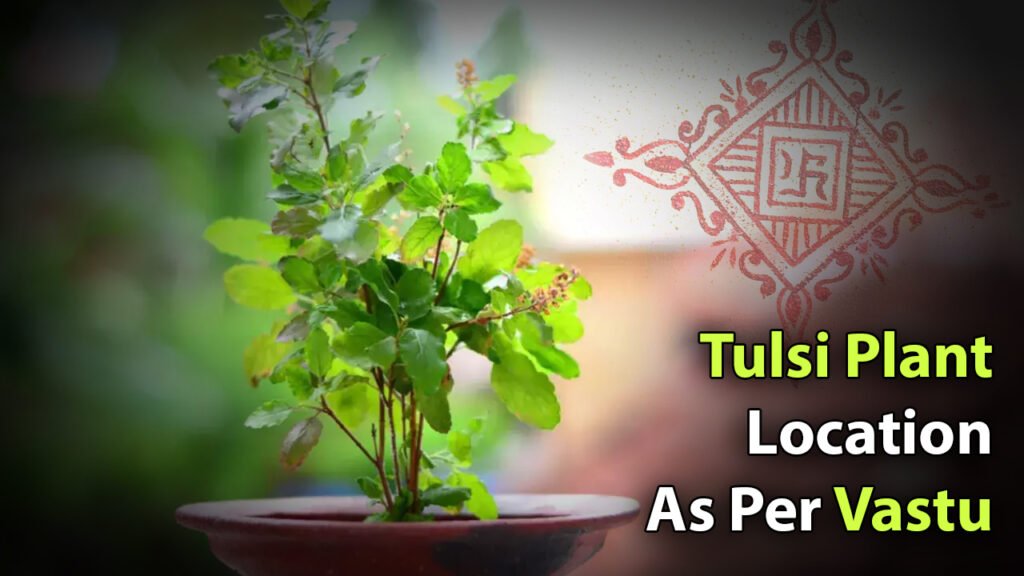Tulsi Plant Location As Per Vastu
The Tulsi plant, revered for its spiritual and medicinal properties, holds a cherished place in many homes. Rooted deeply in Indian cultural traditions, it’s not just a symbol of devotion but also a botanical remedy for numerous health issues. However, Tulsi Plant Location As Per Vastu is crucial, as placing it correctly according to Vastu Shastra, the ancient Indian science of architecture, can enhance its positive effects in your home. In this blog post, we’ll delve deep into Vastu principles about the Tulsi plant and answer frequently asked questions to help you maximize the plant’s benefits in your living space.
Read blog on: What Planet Is for Money?
Understanding the Significance of the Tulsi Plant
The Spiritual and Medicinal Essence
Tulsi, also known as Holy Basil, occupies a sacred spot in Hindu households. Not only is it a vital element in various religious rituals, but the Tulsi plant is also celebrated for its medicinal properties. The leaves are known to cure common ailments such as colds, headaches, and even reduce stress levels, thanks to their adaptogenic nature.
Vastu Guidelines for Placing the Tulsi Plant
Ideal Directions and Placements
According to Vastu Shastra, the direction and placement of the Tulsi plant can significantly influence the energy flow within a home. Ideally, the plant should be placed in the northeastern direction, known as ‘Ishan Kona,’ where it can receive ample sunlight and positive energies.
- Northeast Location: This direction aligns with water elements, promoting emotional tranquility and mental clarity.
- Balcony or Garden: Ensures sunlight, which Tulsi thrives on, thereby boosting its growth and vibrancy.
Other Considerations
- Avoid Southeast and Southwest: These areas, governed by fire and earthly energies, respectively, might not harmonize well with the Tulsi plant.
- Placement Height: Ensure the Tulsi pot is elevated slightly above ground level to maintain a distinct presence and prominence within the space.
Personal Anecdote: Embracing Tradition at Home
Growing up in a traditional Indian family, the Tulsi’s morning rituals were a comforting constant. Watching my grandmother carefully tend to the Tulsi plant, I realized that these practices were less about routine and more about fostering a connection with nature and spirituality. Her explanation that the plant brought harmony and happiness still resonates today, reflecting the real-life application of Vastu teachings.
Common Mistakes and Remedies
Rectifying Vastu Doshas
Even with the best intentions, incorrect placement can happen. Here’s how to address placement errors:
- Relocation: Gently transplant the Tulsi to a favorable direction like the northeast, considering the sunlight and airflow.
- Metal Alignments: Use copper or brass containers to support the plant, as they are considered auspicious and can correct small Vastu-related issues.
FAQs of Tulsi Plant Location As Per Vastu
1. Why is the northeast direction preferred for Tulsi?
The northeast, ruled by water elements, is believed to bring peace and prosperity, and aligns with the sun’s energy, which is crucial for the Tulsi plant’s growth and vitality.
2. Can Tulsi be placed indoors?
Yes, Tulsi can thrive indoors if positioned near a window facing east or northeast, ensuring it receives adequate natural light.
3. What materials should the Tulsi pot be made of for optimal Vastu?
Pots made of clay, ceramic, or natural materials are preferred. These materials harmonize well with the plant’s natural energy and earth elements.
4. Is there any specific ritual to follow when planting Tulsi?
Planting on auspicious days, watering the plant with devotion, and chanting specific mantras can enhance the spiritual benefits according to traditional practices.
5. What to do if there’s no sunlit space in the northeast?
In such cases, placing the Tulsi in an east or north-facing window with decent light is a good alternative. Consider using grow lights if natural light is insufficient.
If you want to watch Astrology Videos visit our YouTube channel: Acharya Ganesh
Conclusion of Tulsi Plant Location As Per Vastu
Incorporating Vastu principles for placing the Tulsi plant not only optimizes its health benefits but also harmonizes the energies within your home. Aligning your living space with traditional wisdom can promote peace, prosperity, and positivity, making it a cherished sanctuary. Whether you’re embarking on Vastu practices or simply seeking to enrich your home environment, the Tulsi plant, revered across cultures, offers symbolic and practical benefits that transcend time.
Call to Action: Embrace the ancient wisdom of Vastu and see how the simple act of repositioning a plant can rejuvenate your living space. Share your experiences with Tulsi and Vastu to inspire others on their journey toward creating a harmonious home.

